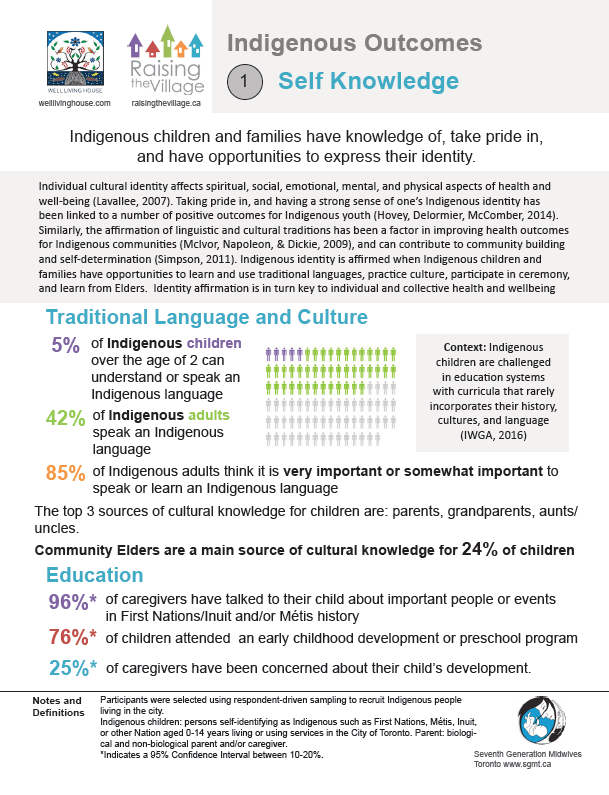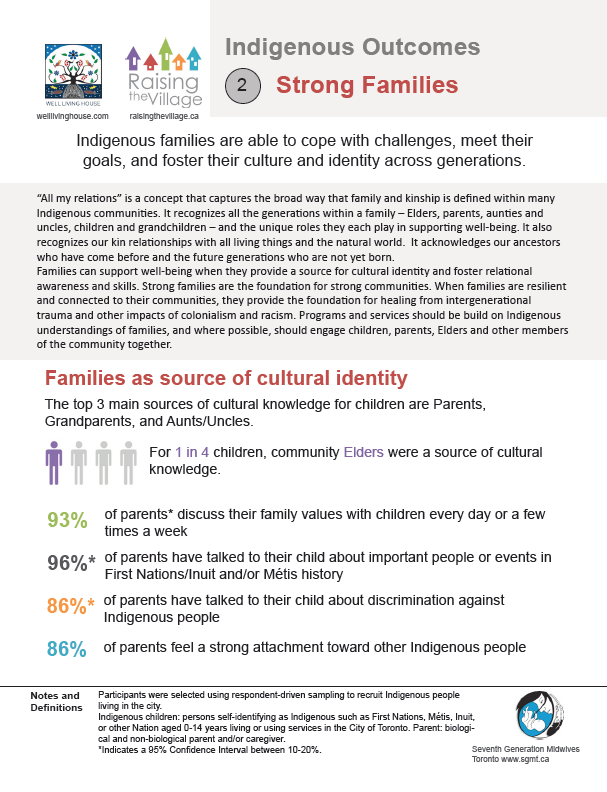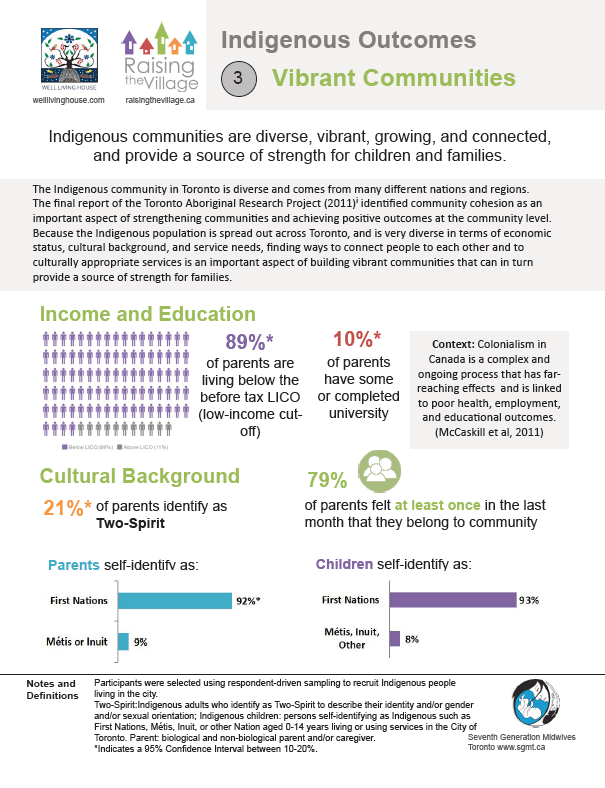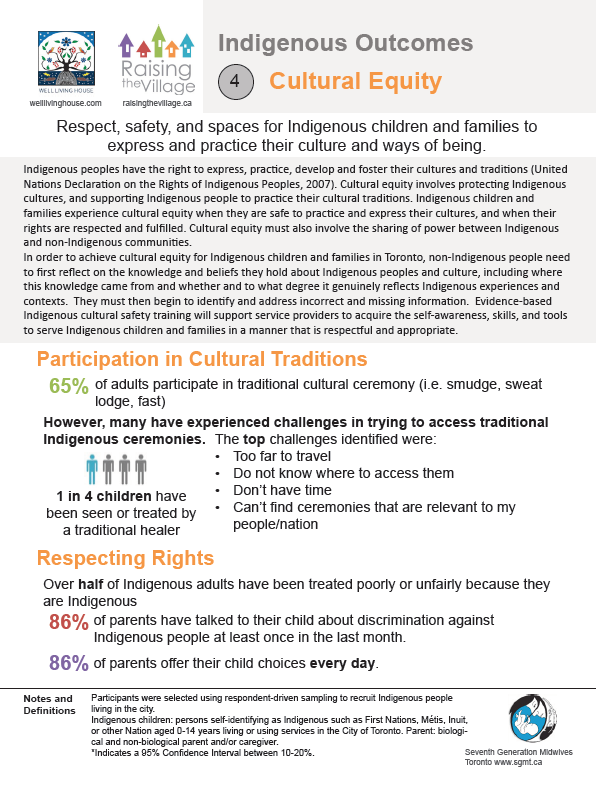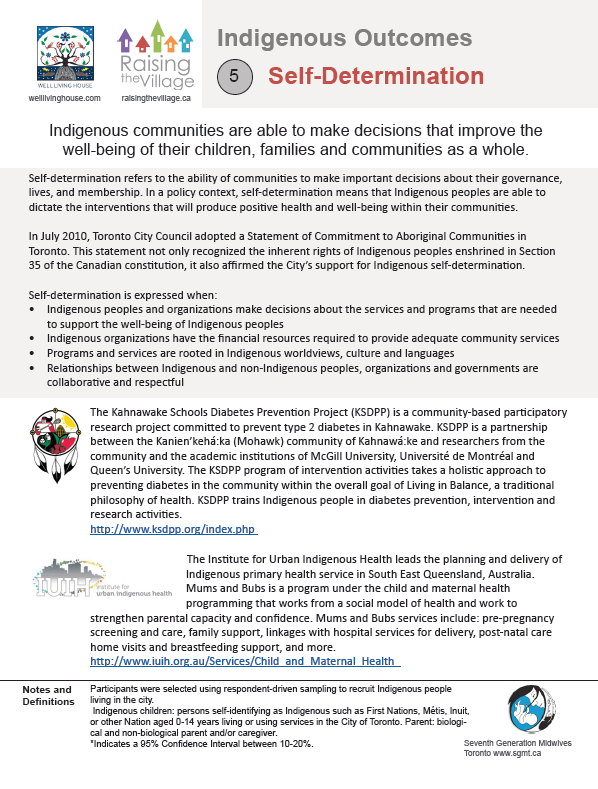Main
-
1214string(27) “physical-health-development”
Physical Health & Development
Healthy Lifestyle & Behaviours
Health Checks
Health Status & Disease
Pregnancy, Births & Early Development
Physical Health & Development
Children are born healthy, and reach their optimal physical health and development.
Defining health
The World Health Organization (WHO) defines health as “a state of complete physical, mental and social well-being and not merely the absence of disease or infirmity”. The Ottawa Charter for Health Promotion states that, in order to be healthy, “an individual or group must be able to identify and to realize aspirations, to satisfy needs, and to change or cope with the environment”. In this way, health is seen as a resource or an asset that helps us lead our everyday lives.
Healthy births
A healthy birth for every child in Toronto is an important goal because a healthy birth is a significant predictor of future health, development and overall well-being. A healthy birth is closely linked to the health of the mother (starting from before conception), which is affected by many social and material factors.
Physical health and development
Physical health and development, mental health, and social and emotional development are all intrinsically linked. The exercise of breaking well-being into separate outcomes poses inherent challenges because all aspects of well-being are so connected. Separating the Physical Health & Development Outcome from the Mental Health & Social Development Outcome ensures that each outcome can be measured in a manageable and appropriate way.
Screen time
What is it?
Screen time is based on TDSB students (grades 4 to 8) who reported how much time they spent watching TV or videos or playing computer/video games on a school day. “Less than 2 hours per day” includes students who responded “none”, “less that 1 hour per day”, and “1-2 hours per day” and “More than 2 hours per day” includes “2-3 hours per day” and “More than 3 hours per day”.
Limitations
This indicator is not able to identify beneficial screen time such as a computer game that helps students advance math skills or an educational video that may be assigned for homework.
Active transportation to school
What is it?
Active transportation to school is based on the precentage of TDSB students (grades 4 to 8) who reported walking or biking to school.
Limitations:
This indicator asks children to identify how they get to and from school from a selection of transportation modes. There are some active transportation modes that may not be represented in the results such as using a scooter or a skateboard to get to or from school.
Physical Exercise
What is it?
Physical exercise is based on the percentage of TDSB students (grades 4 to 8) who reported how often in a regular school week they exercised or took part in a sport that caused them to sweat or breath harder.
Limitations
This indicator only accounts for physical activities that cause sweat or heavy breathing (aerobic activity), leaving out other forms of excercise (e.g. resistance training, flexibility training) that are equally beneficial to well-being. Furthermore, it only accounts for frequency, and not intensity of physical activity.
Hours of sleep
What is it?
Hours of sleep is based on the percentage of TDSB students (grades 7 to 8) who reported average hours of sleep on a school night. “Less than 8 hours” includes students who responded “Less than 5 hours”, “5 hours”, “6 hours” or “7 hours” responses and “8 or more hours” includes “8 hours”, “9 hours” or “More than 9 hours”.
Limitations
This indicator does not take into account sleep quality. Frequently interrupted sleep could impact overall health. There are also various guidelines and studies that show that grade 7 and 8 may have different recommended hours of sleep. Canadian 24-hour movement guidelines recommends that for grade 7 students (predominantly 13 year olds) the minimum recommended hours of sleep is 9 hours and for grade 8 students (predominantly 14 year olds), the minimum recommended hours of sleep is 8 hours. Centers for Disease Control and prevention (CDC) recommends minimum of 8 hours of sleep per day for 13-18 years.
Tiredness
What is it?
Tiredness is based on the percentage of parents of TDSB students (JK to grade 6) who reported how often their child seemed tired in the morning.
Limitations
This indicator does not account for whether a parent is actually present to see their child wake up in the morning. It also does not elaborate on the multitude of reasons why a child may experience tiredness in the morning including: circadian rhythm, morning/evening extracurricular activities, anxiety preventing sleep, problems at home preventing sleep, differences in school start times, etc.
Unhealthy Eating
What is it?
Unhealthy eating is based on the percentage of TDSB students (grades 4 to 8) who reported how often during a regular school week they ate fast food or soft drinks. “Often” includes “Every day” or “Most days” responses and “Sometimes” includes students who responded “1-2 days”.
Limitations
This indicator does not include the full range of unhealthy eating choices that students could make. For some students, unhealthy food choices may be due to socioeconomic constraints or the unavailability of healthier eating options close to where they live.
Healthy Eating
What is it?
Healthy eating is based on the percentage of TDSB students (Grades 4-8) who reported how often during a regular school week they ate vegetables, fruits, or dairy products/alternatives. “Often” includes “Every day” or “Most days” responses and “Sometimes” includes students who responded “1-2 days”.
Limitations:
This indicator does not include the full range of healthy eating choices that students could make (i.e. there may be healthy food or drink items not captured in the question.) Students may not remember the frequency that they ate healthy foods or may not know that a healthy food product was part of something they had consumed (i.e. within a smoothie). Students may have different access to healthy foods due to income, food insecurity, where they live and more.
Enhanced 18-month Well Baby Visit
What is it?
The number of enhanced 18-month well-baby visits (WBVs) per 100 population. Enhanced 18M WBVs are the services rendered when a physician performs all of the following for a child aged 17 to 24 months: (1) those services defined as “well-baby care”; (2) an 18-month age-appropriate developmental screen; and (3) review with the child’s guardian of a brief standardized tool that aids in the identification of children at risk of developmental disorders.
Limitations:
Because the enhanced 18M WBV can only be billed for children aged 17 to 24 months, the indicator is an under-estimate of the true rate of enhanced 18M WBV. Also, income analysis is based on area-level assignment of income rather than direct measurement of individuals’/family’s income. Finally, data include the number of distinct patients with a valid health card number. Children without a fixed address, recent newcomers and undocumented individuals may not be captured. These children represent marginalized communities in Toronto.
Data Source:
Ontario Health Insurance Plan (OHIP) Approved Claims file. Please see pages 12-13 of the Reproductive & Infant Health Population Health Status Indicators Technical Notes.
Physical health check-up
What is it?
Physical health check-up is based on TDSB students (grades 7 to 8) who reported how often do they usually go to a doctor for a physical health check-up.”Yearly” includes students who responded “Once a year or more” and “Once every few years or Once” includes “Once every few years” or “Once”.
Limitations:
This indicator is based on the student’s memory of visiting their doctor. It may be difficult to accurately remember when and how many times they visited.
Dental check-up
What is it?
Dental check-up is based on TDSB students (grades 4 to 8) who reported how often do they usually go to a dentist to have their teeth checked. “Yearly” includes students who responded “Once a year or more” and “Once every few years or Once” includes “Once every few years” or “Once”.
Limitations:
This indicator is based on the student’s memory of visiting their dentist. It may be difficult to accurately remember when and how many times they visited.
Hearing test
What is it?
Hearing test is based on TDSB students (grades 4 to 8) who reported how often do they usually go to a doctor for an hearing test. “Yearly” includes students who responded “Once a year or more” and “Once every few years or Once” includes “Once every few years” or “Once”.
Limitations:
This indicator is based on the student’s memory of visiting their doctor. It may be difficult to accurately remember when and how many times they visited. Hearing tests may only be done once a problem with hearing is identified.
Eyesight Test
What is it?
Eyesight test is based on TDSB students (grades 4 to 8) who reported how often they usually go to a doctor for an eye test. “Yearly” includes students who responded “Once a year or more” and “Once every few years or Once” includes “Once every few years” or “Once”.
Limitations:
This Indicator is based on the student’s memory of visiting an eye doctor. It may be difficult to accurately remember when and how many times they visited. There may also be cases where the student did not realize they were receiving an eyesight test.
Immunization compliance
What is it?
Immunization Compliance is based on the percentage of students who were compliant with Ontario’s Routine Immunization Schedule. Under the Immunization of School Pupils Act, Toronto Public Health is responsible for the collection and assessment of student immunization records.
Limitations:
Given restriction in how data is captured, further analysis by income or other socio-demographic characteristics is not currently available.
Self-rated physical health
What is it?
Self-rated physical health is based on the percentage of TDSB students (Grades 7 to 8) who rated their physical health as either “Good,” “Very Good,” or “Excellent” and those who rated their physical health as “Poor,” “Fair,” or “Average.”
Limitations:
This indicator is highly subjective and relies heavily on students’ understandings and/or perceptions of physical health. Understandings of physical health are impacted by a variety of factors including culture, education etc. and thus, may vary drastically from person to person.
Mental Health Concern during Pregnancy
What is it?
The percentage of women who experienced any mental health concern(s) during pregnancy. This includes anxiety, depression, history of postpartum depression, addiction, bipolar, schizophrenia, or other.
Limitations:
Maternal mental health variables from BORN are self-reported and, thus, subject to under-reporting and social desirability bias. Occurrences of different types of mental health concerns during pregnancy are not mutually exclusive. Therefore, the total number of mental health concerns may be greater than the total number of women with one or more (any) mental health concern(s). Also, income analysis is based on area-level assignment of income rather than direct measurement of individuals’/family’s income.
Data Sources:
Please see page 10-11 of the Reproductive & Infant Health Population Health Status Indicators Technical Notes.
Small for Gestational Age
What is it?
The number of small for gestational age (SGA) singleton live births per 100 singleton live births. SGA refers to babies with birth weights below the 10th percentile of birth weight for babies of the same sex and gestational age.
Note:
Gestational age is calculated as the interval between the date of delivery of the fetus or newborn and the first day of a woman’s last normal menstrual period. Full-term pregnancies average about 40 weeks (37 completed weeks to 42 completed weeks).
Limitations:
Canadian reference birth weight for gestational age percentile cut-offs may misclassify healthy infants of certain ethnicities as SGA. Newborns of parents originating from non-European/Western nations tend to be smaller at birth. However, ethnic-specific birth weight for gestational age cut-offs are currently not available for Ontario in a format that can be used for population health. As a result, public units with large immigrant population (such as Toronto) may observe higher SGA rates and lower LGA rates in comparison to other public health units. Also, income analysis is based on area-level assignment of income rather than direct measurement of individuals’/family’s income.
Data Sources:
Please see pages 7-8 of the Reproductive & Infant Health Population Health Status Indicators Technical Notes.
Preterm birth
What is it?
The number of preterm live births per 100 live births. Preterm birth is defined as birth before 37 completed weeks of pregnancy.
Limitations:
Income analysis is based on area-level assignment of income rather than direct measurement of individuals’/family’s income.
Data Sources:
Please see page 11 of the Reproductive & Infant Health Population Health Status Indicators Technical Notes.
Alcohol During Pregnancy
What is it?
The percentage of women with any alcohol exposure during pregnancy.
Limitations:
Alcohol exposure data from BORN are self-reported and thus subject to under-reporting and social desirability bias. Also, income analysis is based on area-level assignment of income rather than direct measurement of individuals’/family’s income.
Data Sources:
Please see page 7 of the Reproductive & Infant Health Population Health Status Indicators Technical Notes.
Low Birth Weight
What is it?
Low birth weight is defined as a birth weight of less than 2,500 grams (5.5 pounds), regardless of gestational age. Low birth weight refers to the number of babies born low birth weight, expressed as a percentage of all live births.
Limitations:
This indicator does not consider gestational age (weeks of the pregnancy) or ethnicity, which are known confounders of low birth weight. Birth weight is only one dimension of a healthy birth and pregnancy. Low birth weight rates include all babies and are not stratified by singletons vs. multiple births (except for in the Birth Status visualization). Income analysis is based on area-level assignment of income rather than direct measurement of individuals’/family’s income.
Data Sources:
Please see page 10 of the Reproductive & Infant Health Population Health Status Indicators Technical Notes.
Physical health & well-being
What is it?
Physical health and well-being is based on the percentage of kindergarten children who scored on-track, at-risk and vulnerable based on 13 questions in areas of physical development (i.e. gross and fine motor skills, energy levels, independence in looking after own needs, and daily living skills.) The vulnerability cut-off for this domain is 7.3 out of 10 and the at-risk cut-off for this domain is 8.1 out of 10.
Limitations:
Children’s physical development can occur at different times. Children who are younger are more likely to score lower in this domain. The range of results in the EDI physical development domain has tended to be quite small, which means the scores of vulnerable children on this domain are not necessarily much lower than non-vulnerable children.
Breastfeeding
What is it?
Breastfeeding is measured by two indicators. Intention to breastfeed measures the percentage of women who indicated (during their pregnancy or at the time of birth) that they intended to breastfeed their infant(s). Infant feeding measures the percentage of infants who were being breastfed exclusively (breast milk only) or non-exclusively (e.g. combination of breast milk and substitute). Infant feeding was measured at different points in time such as at the hospital after giving birth or two to six months after birth.
Limitations:
The breastfeeding indicator should be interpreted with caution due to high missing responses for this indicator. Information about breastfeeding at other time points, such as at 6-months, is currently not available. Intention to breastfeed data from BORN and infant feeding data from the 2017 IFSP is self-reported, and thus may be subject to social desirability bias. It is likely that breastfeeding decreases after mothers leave the hospital.
Smoking During Pregnancy
What is it?
Smoking during pregnancy is based on the percentage of mothers who reported smoking at any time during pregnancy. Any smoking refers to smoking any amount of cigarettes during pregnancy, including those who did not know how many cigarettes were smoked.
Limitations
Smoking during pregnancy may be underreported, in part due to diminished social acceptance of this behaviour. As such, these rates could underestimate the true rate.











